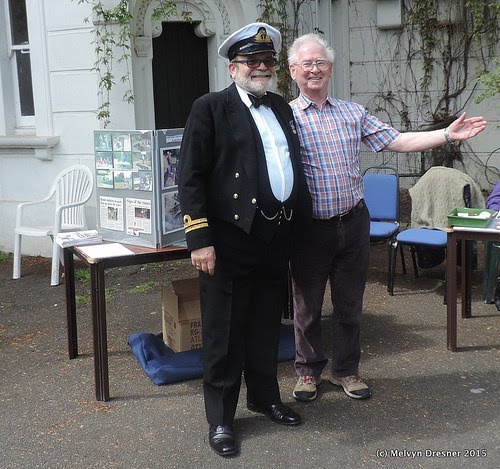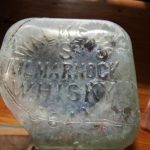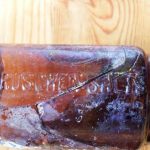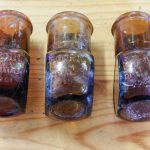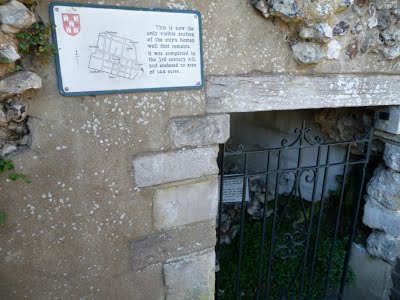
No. 540 MARCH 2016 Edited by Deirdre Barrie
HADAS DIARY
Tuesday 8th March, 8pm. The Crossrail Archaeology Project. Lecture by Jay Carver, lead archaeologist with the Crossrail Project. The archaeology programme has involved more than 50 new investigations into London’s long history, spanning its prehistoric beginnings, the founding of Londinium in the Roman period, and a wealth of medieval and post-medieval sites right up to the City’s industrial and rail heritage age in the 19th century. Jay will provide an overview of the new discoveries undertaken during the last five years of work on Europe’s largest construction project, which has involved the efforts of more than 200 archaeologists and engineers.
Tuesday 12th April 2016, 8pm. In the lift to the beach: a visit to the Lundenwic waterfront by Douglas Killock
Tuesday 10th May, 8pm. Hadrian’s Wall: Life on Rome’s Northern Frontier. Lecture by Matt Symonds.
Tuesday 14th June 2016 ANNUAL GENERAL MEETING
Tuesday 11th October 2016 Talk by Professor Caroline Barron – title to be announced.
Tuesday 8th November 2016, 8pm. The Cheapside Hoard – lecture by Hazel Forsyth
All the above events, unless otherwise stated, will be held at Stephens House & Gardens (formerly Avenue House), 17 East End Road, Finchley N3 3QE, starting at 8pm, with tea/coffee and biscuits afterwards. Non-members are welcome (£1.00). Buses 82, 125, 143, 326 and 460 pass nearby. Finchley Central Station (Northern Line) is a short walk away.
—————————————————————————————————————–
Bradford on Avon Trip Jim Nelhams
We have had a good response and have now booked the hotel and the coach. We will be travelling on Monday 19th September and returning on Friday 23rd, staying for four nights at the Best Western Leigh Park Hotel on the outskirts of Bradford on Avon.
Full price is not yet known but seems likely to be around £470 per person sharing a twin or double room, and £520 per person with their own room. This is a slight increase on last year, but the first increase we have had for a while. We will need a deposit of £125 by the end of April with the balance by 15th July.
There are still places available, so if you want to add your name to the list or if you have any friends who would like to join the trip, please contact Jim or Jo Nelhams (contact info on back page). Each empty seat on the coach costs everybody in the group about £2 extra, so more people help to keep the cost down for everybody.
—————————————————————————————————————–
November 2015 Lecture – The History of the Royal National Lifeboat Institution – Keith Cunningham Report by Marilyn Burgess
The lecture was delivered by Keith Cunningham, founder member of the City of London Fundraising Committee, and focused on how the Royal National Lifeboat Institution was formed and the types of lifeboats used from the outset to present day.
The turbulent seas round the coast of Great Britain can be treacherous and over the centuries countless ships had come to grief. By the eighteenth century, with sea traffic increasing as trade grew, a competition was held to find the best design for a lifeboat. The competition was won by Henry Greathead who was a boat builder and in 1789 the first purpose-built lifeboat was built and stationed at South Shields by the Tyne.
The invention and development of the Shields rowing lifeboat continued, but shipwrecks were commonplace and regarded as an accepted way of life at sea. The number of shipwrecks around our coastline had risen to approximately 1800 a year and in 1823, when William Hillary, the MP for the Isle of Man, witnessed a tragedy, he made an impassioned plea to the nation and published a pamphlet detailing his plans for a lifeboat service. The pamphlets were sent to the Royal Navy, ministers and prominent citizens, appealing for what was called the National Institution for the Preservation of Lives & Property from Shipwreck.
William Hillary’s appeal fell on deaf ears, but he did not give up and re-branded his appeal. In 1824 his idea caught the eye of Thomas Wilson, Liberal MP for Southwark, and shipping magnate George Hibbert, a Whig MP and Chairman of the West Indies Merchants. The three men became a formidable force, and the campaign rapidly gathered momentum. As more and more benefactors came on board, an interim committee was set up, with King George IV assuring Royal Patronage and Prime Minister Robert Jenkinson, 2nd Earl of Liverpool, agreeing to be President.
A meeting was held on 4 March 1824 at the London Tavern in Bishopsgate, London, where Vice-President Archbishop of Canterbury Dr Charles Manners-Sutton presided, and the crowd unanimously passed 12 resolutions. It was agreed that an Institution be formed, which was to be funded by donations and annual subscriptions. The institute was named The Royal National Lifeboat Institution and the 12 resolutions still stand today as part of the RNLI’s charter, almost 200 years later.
We viewed slides featuring the Newquay Lifeboat Station and showing early lifeboats which had to be pulled out of the boathouse by man- and horse-power and taken to the shoreline, a rocket being launched to summon the crew. The old-style boats were very laborious and a team of men was required to drag them into position. Problems were encountered in the harbour with the tide going out and it was necessary to construct new buildings.
We were told of the improved lifeboats, which are primarily split into categories: inshore, offshore, all-weather boats and hovercraft. The fact that these new boats are state-of- the-art designs with an improved technology means that far smaller crews are needed, and volunteers are now paged when their assistance is required. The average age of a lifeboat is 20 years in service of RNLI, although the boats still have many further years’ usage, and from 2007 lifeboats have been sold on to China, and also countries in Africa and South America.
The tragedy of the collision of the Marchioness pleasure boat and the Bowbelle dredger in 1989 resulted in the loss of 51 lives, and it was identified by the Port of London Authority that lifeboats should be introduced to the Thames. There are four lifeboat stations covering the Thames: at Teddington, Chiswick, Gravesend and Tower Bridge (now relocated to Waterloo Bridge), with the Tower Lifeboat Station being the busiest lifeboat station in the country.
Keith gave us an insight into his involvement as a volunteer with the RNLI dating back to 1967, when he participated in a collection with a work colleague, and this led to his forming the City of London Fundraising Committee. His team of collectors grew to 49, and at their peak collected the sum of £9,000 in a day. The volunteers had some memorable experiences, in particular participating in the Lord Mayor’s procession on two occasions. Many thanks to Keith for an interesting talk.
___________________________________________________________________________
Membership Renewal – Stephen Brunning (Membership Secretary)
The HADAS membership year runs from 1st April, so all memberships are now due for renewal, apart from those new members who have joined since January this year. There is a separate form with this Newsletter for those people who pay by cheque, and I would ask that you return the form to me along with your remittance for the appropriate amount. Members who pay by standing order need take no action. The rates remain unchanged.
Anyone who thinks they should have had a Membership Renewal Form or Standing Order Form but hasn’t received one, anyone who wants to make their membership under Gift Aid and hasn’t already done so, or anyone who has any question at all about their membership, please contact me (contact details on back page).
___________________________________________________________________________
Help Required Don Cooper
In mid-2014 HADAS published “A Hamlet in Hendon”. We distributed it free to all our members and sold a small number of copies. To take its distribution to the next stage we need a volunteer to devise, create and implement a marketing plan so that this well-reviewed book reaches as wide a readership as possible both locally and nationally as well as among the history and archaeology community.
Should you feel that this is something you would like to take on, please apply to the HADAS chairman. See the contact details at the end of this newsletter.
___________________________________________________________________________
HADAS Trip – Lyndhurst – Day 5
Time to head home, but not without some stops on the way. First to Winchester. Luckily more than 40 days had expired since St Swithun’s Day.
Winchester Great Hall Dot Ravenswood
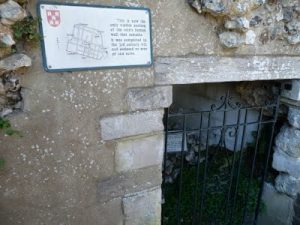 On Saturday the coach took us up to a high viewpoint, the wide paved area on the site of the Norman castle. We were to visit the only part of the castle that Cromwell left standing, the Great Hall (and, according to Jim, to see the world’s biggest dartboard!). Our guide was an enthusiastic walking encyclopaedia, never at a loss for a name or a date. Among other things, she told us that the hall was built between 1222 and 1235 at a cost of £500; it had always been an important legal and administrative centre, Edward I held a tournament and other celebrations there for the betrothal of his daughter in 1290, Sir Walter Raleigh stood trial there in 1603, and Judge Jeffreys held the Bloody Assizes there in 1685.
On Saturday the coach took us up to a high viewpoint, the wide paved area on the site of the Norman castle. We were to visit the only part of the castle that Cromwell left standing, the Great Hall (and, according to Jim, to see the world’s biggest dartboard!). Our guide was an enthusiastic walking encyclopaedia, never at a loss for a name or a date. Among other things, she told us that the hall was built between 1222 and 1235 at a cost of £500; it had always been an important legal and administrative centre, Edward I held a tournament and other celebrations there for the betrothal of his daughter in 1290, Sir Walter Raleigh stood trial there in 1603, and Judge Jeffreys held the Bloody Assizes there in 1685.
The Great Hall, with its tall, slim pillars of Purbeck marble, is said to be one of the finest aisled medieval halls in existence. But its main attraction must be the “giant dartboard” – in other words, the Round Table that hangs on the west wall.
The Round Table of Arthurian legend was first mentioned by the chronicler Wace in 1155, six or seven hundred years after the time when Arthur may have lived. It was later still, probably at King Edward I’s tournament in 1290, that the Winchester Round Table first appeared. I must admit that I had always assumed it to be a Victorian fake: a bit of nostalgic, nationalistic myth-making in the style of Tennyson’s Morte d’Arthur. So it was doubly surprising to learn that in its present form it was actually a Tudor fake, since the gaudy royal figure, the rose and the segments were painted in for that great self-publicist Henry VIII. Some things don’t change….
Winchester City Return Visit Andy Simpson
 Having had a wonderful three years in Winchester from 1978 (!) doing my first degree, it was good to be back – so little time (relatively speaking), so many places to visit! Sadly the Roman House formerly on view beneath the Brooks Shopping Centre in the city centre had closed – but that just left more time to pop down to the former Winchester Chesil railway station site on the former GWR Didcot, Newbury and Southampton line, and the nicely preserved Bar End goods depot nearby, not visited since 1982! A good view of the related railway viaduct and nearby Iron Age univalate hillfort at St Catherine’s Hill was obtained from the coach. And a quick look at the city walls – including tiny fragment of Roman wall- in the SW corner of the city.
Having had a wonderful three years in Winchester from 1978 (!) doing my first degree, it was good to be back – so little time (relatively speaking), so many places to visit! Sadly the Roman House formerly on view beneath the Brooks Shopping Centre in the city centre had closed – but that just left more time to pop down to the former Winchester Chesil railway station site on the former GWR Didcot, Newbury and Southampton line, and the nicely preserved Bar End goods depot nearby, not visited since 1982! A good view of the related railway viaduct and nearby Iron Age univalate hillfort at St Catherine’s Hill was obtained from the coach. And a quick look at the city walls – including tiny fragment of Roman wall- in the SW corner of the city.
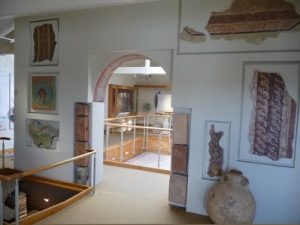 Winchester City Museum Deirdre Barrie and Andy Simpson
Winchester City Museum Deirdre Barrie and Andy Simpson
And of course a lingering look at the archaeological and social history displays in the City Museum, situated right by the magnificent cathedral. After a recent refurbishment, you start at
the top in Roman Winchester – Venta Belgarum – proceed to Saxon and medieval Winchester – Wintanceaster – Saxon Royal capital of England, and burial place of Alfred the Great. And a happy hunting ground for Martin Biddle excavating various Saxon Minsters and town centre sites in the 1960s/70s. Lots of pagan Saxon grave goods on display from extra-mural cemeteries – and end up in Victorian Winchester with its reconstructed shop fronts on the ground floor. Exit through Gift Shop, naturally. The models of Roman and medieval Winchester were excellent, as were the medieval pottery selections – a good primer for the evening class! Some lovely Roman mosaic and painted wall plaster fragments also, as shown in the accompanying photo. Must return soon…
The top gallery houses a star exhibit: the nearly complete Sparsholt Flower Mosaic floor, from a Roman villa excavated between 1965-1972 by D.E.Johnson.
The Winchester Moot Horn (12th C, copper alloy) needed a shoulder strap to support its weight, when it was used to call citizens to the “Burrough Mote” which was similar to today’s Council meetings. It could apparently be heard for several miles in the 1920s, when it was last blown, but it’s a replica which is now sounded at the annual mayor-making ceremony in May.
Another interesting exhibit is a rare suit of Almain Rivet armour, which might have belonged to the Tudor town guard, and was imported from Germany.
“Janeites” (i.e. fans of Jane Austen) would be particularly interested in the items owned by the author, which include a poem in her own hand, and a pretty purse with blue beads, which is supposed to have been worked by Jane herself. Jane came to stay in Winchester hoping for expert medical help to cure her last illness; but is buried in the Cathedral.
Apparently some local residents can still remember the preserved Victorian shop fronts (ground floor, Winchester Gallery) when they were in their original places. The tobacconist’s shop (does anyone remember “Passing Clouds” cigarettes?) is a particular favourite.
The museum is well worth a couple of hours of your day trip.
Winchester Cathedral – “Don’t Forget the Diver!” Liz Tucker
Whenever I go on a cultural trip including cathedrals, I am always overawed by their wonderful architecture and fascinated by their history – but after returning home, I often can’t remember which cathedral is which. This time we visited two, which were both built by William the Conqueror to replace older buildings in the area – and I made a special effort not to confuse Winchester with Salisbury.
After waiting for the Bishop to emerge from a service with various Mothers’ Union delegates, we went inside and heard a very interesting talk by a guide. The Romans, followed by the Saxons, settled in the area, which became Christian in 634 AD. In William’s time, Winchester was the capital of England, so he was determined to build something very imposing, similar to St Etienne in Caen. You can still see the original Romanesque style (with round arches) in the transepts, followed by different styles of Gothic in other areas. The long, high and narrow nave, with wonderful stone vaulting, is the most spectacular part of the building. The guide pointed out that the width of the nave was determined by the height of the trees available for the roof.
The choir stalls by the altar still have some of the original wooden carvings of secular subjects, such as dragons, green men and a cat with a mouse. We saw Jane Austen’s grave slab, and the plaque set up in her honour later on. Andrew and I, regular choral singers, were delighted to hear a lunchtime concert by a chamber choir, including Ave Virgo Sanctissima by the Spanish composer, Francisco Guerrero, which might have been sung in the cathedral at the wedding of Mary Tudor and Philip of Spain.
Over the centuries, parts of the cathedral were “knocked about a bit” by Henry VIII and then Cromwell. The glass from the huge West window was later reassembled in a random pattern, and the statues of the great screen were re-carved; St Swithun’s shrine, however, was lost without trace.
The greatest enemy of the building, however, was not human beings, but Nature. The Romans had diverted the River Itchen to form a moat, so that the cathedral is built on a very unstable river bed. It could not possibly support a spire like Salisbury’s, or even the large towers planned by William. The crypt floods regularly, and an Antony Gormley installation takes advantage of this effect.
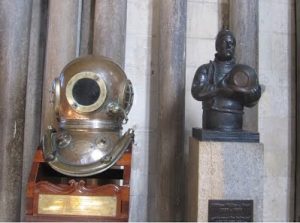 In 1900, the cathedral was seen to be subsiding, and it was discovered that the foundations consisted of soft peat and floating logs. A deep-sea diver, William Walker, spent six hours a day, for six years, replacing these with concrete. My photograph shows two of the memorials to him. I wonder if the constant struggles with water gave rise to the legend of the patron saint making it rain for forty days, because he was annoyed that his tomb had been moved!
In 1900, the cathedral was seen to be subsiding, and it was discovered that the foundations consisted of soft peat and floating logs. A deep-sea diver, William Walker, spent six hours a day, for six years, replacing these with concrete. My photograph shows two of the memorials to him. I wonder if the constant struggles with water gave rise to the legend of the patron saint making it rain for forty days, because he was annoyed that his tomb had been moved!
Whitchurch Silk Mill Ken Sutherland-Thomas
Our final visit of the holiday was to the Whitchurch Silk Mill.
The silk mill is the oldest in the UK still in the original building, and is a gem of industrial heritage. The mill is a Georgian building and uses 19th century machinery powered by the original water mill wheel.
On arrival, our party was split into smaller groups for guided tours of the premises. Being a Saturday, no work was being carried out, but our guide explained the manufacturing process and showed a film about the mill and its manufacture of silk. The objectives of the trust that runs the mill are to retain the skills of weaving on the machinery, to care for the building and its contents, and to inform the public about textiles.
Before leaving, many of our group made use of the mill’s catering facilities and well-stocked shop.
The mill is beautifully sited and the mill stream (part of the River Test) is home to many ducks. The mill clock is a feature of the outside of the mill, and was made in London by Handley and Moore in the late 18th century. It still provides the time for the citizens of Whitchurch today.
Correction
In the article on Clitterhouse Farm in the last edition I said in footnote 3 that ‘Westminster Abbey is used as a modern shorthand. The land was held by the Abbot of St. Peters at the time of the Domesday Book, only becoming known as Westminster Abbey at a later date.’ It has been pointed out to me that this is wrong. The list of landholders that stands at the start of Domesday Middlesex actually has ‘Abbatia de Westmonast’- i.e. Abbey of Westminster; ‘abbot’ would be ‘abbas.’ I’m grateful to Pam Taylor for pointing this out. Roger Chapman
The Royal Palaces of Enfield: January 2016 Lecture – Ian Jones,
Acting Chairman of Enfield Archeological Society Report by Liz Gapp
Ian started the lecture by explaining that there were two palaces in Enfield: Elsyng Palace at Forty Hall and Enfield Palace to the rear of Pearson’s, the Department Store in Church Street in Enfield.
The first part of the talk was about Elsyng Palace and the excavations carried out there. Photos of the first excavations carried out in the 1960s highlighted that in those days the ladies excavating wore skirts rather than trousers as now. Unfortunately, most of the site plans from the 1960s excavations have disappeared, although the site workbooks still exist and have proved very useful.
Not all of Elsyng Palace was excavated; a series of excavations were carried out to assess its size. An old view of the Lime Tree Avenue was shown to explain that where the path dropped down was where it would have been possible to see brickwork of the palace, which is no longer there. A lot of the lime trees came down subsequently in the storm of 1987. Due to a decision to reconstruct the Lime Tree Avenue, large holes were dug in readiness for the new trees. The first holes dug revealed brickwork at the base. As the site of Elsyng Palace is a scheduled monument, and the Enfield Society’s fieldwork director is a professional archae- ologist, English Heritage gave permission for the Enfield Archeological Society to excavate the holes that were being dug, as the bricks uncovered were deemed to be part of the palace. This meant relocating the trees being planted, with the benefit of uncovering further details of the palace. Unfortunately, the excavations were not extensive enough to identify the usage of these areas. In the tree pits, where the brick foundations were found, the only way to age them was via the mortar used.
There were very few finds to give clues to the likely usage; the area appeared to have been cleared of most of such items, probably when the palace was demolished. A very fine cesspit was uncovered, but unfortunately collapsed very shortly after being revealed. Initially vandalism was suspected, but then it was realised that the lime mortar’s fragility was the culprit, as once exposed to the air it could no longer hold the structure in place. Due to the collapse, it was not possible to find what was in the pit, as English Heritage strictures would not allow further excavation of it. A shame, as often such pits are a rich source of artefacts.
From excavation, there are believed to be four main stages of development; Phases I and II being medieval, while Phases III and IV date to Henry VIII’s time. Due to the closeness of the time frames for the phases, it is not entirely clear that there are four phases of development.
A brief outline of the palace’s history started with the fact that Henry VII and his daughter Margaret stayed in the Tudor apartments for hunting in 1497 and 1498. Custodianship of Elsyng went from the Ros family to Sir Thomas Lovell, speaker of the House of Commons, via marriage to Isabel, sister of Edmund Ros, after he was committed to an asylum. It returned to the family in the guise of his great-nephew Thomas Manners, 1st Earl of Rutland. Thomas Lovell was responsible for extending the building to become a ‘brick palace sufficient to receive the court in progress’.
Lambert Simnel, one of the many pretenders to Henry VII’s throne, was obviously considered to be harmless as he was parked in Thomas Lovell’s kitchen in 1487 and later became a falconer. Still alive in 1524, he was explicitly mentioned in Thomas Lovell’s will stating he was not to inherit anything from it when Lovell died. Part of a peregrine falcon’s skeleton found in the 1960’s verifies the royal connection, as these birds were bred only for royal use. In 1516, Henry VIII’s sister, Queen Margaret of Scotland, stayed there. Lovell also contributed to the clerestory and glazing of Enfield parish church, and founded the Holywell Priory.
Henry VIII obviously liked the house as a base for hunting, so persuaded the Earl of Rutland to give it to him in exchange for property in Leicestershire. Henry’s children spent part of their childhood there, and it was there that Elizabeth and Edward learnt of their father’s death. Extensive repairs were carried out in 1542 for a Christmas visit by Prince Edward and his sisters, and again under Elizabeth I, who is believed to have stayed at the Palace on at least four occasions. There are lots of documents associated with the building repairs which give good information.
To give an idea of the probable style and size of the Palace of which nothing is now visible above ground, we were shown comparable buildings viz:
Nonsuch Palace, if the long gallery is omitted, shows the size; Oaklands Palace in Surrey; a photo of a painting of the interior of Whitehall Palace illustrated the richness of the interiors which are likely to have existed at Elsyng Palace; Lincoln’s Inn entrance is likely to be similar to that at Elsyng Palace, particularly as it was funded by Sir Thomas Lovell; Nether Hall; and Rye House in the Lea Valley.
A geophysical survey done in the 1990s turned out to be quite misleading. In 2004, a new excavation was started. Magnetometry, geophysics and photos all looked very interesting, but because of rammed gravel in the area, proved to be deceptive. A beautiful brick drain was shown, from which many items were extracted. Other items found included carved brick and fragments of carved stone; post-medieval red wares, probably dated to the first half of the 17th century; tobacco pipes; several fragments of trailed Venetian glass, all from different vessels; and three mid-17th century fragments of Bartmann heads. A 1550s Cologne ware flagon was found, as was a very rare set of window glass triangles, some still framed in their original lead canes. There was also brick, probably from the service areas, as the main areas were believed to have been in stone. Similarly green-, yellow- and brown-glazed tiles were found, with more elaborate tiles in later areas. A large drain was found with a trickle of water still draining through it, and a couple of the archaeologists were able to get through 70 feet of this until the way forward was blocked by rubble.
The deer park that surrounded Elsyng Palace was fenced with wooden fencing and with several gazebos over the area. By 1586, Elsyng Palace had deteriorated and was rumoured to be in use as a Bath House and was only worth £7 a year. In 1650 a threshing barn was built, on top of the Tudor remains, and was then demolished in 1660s, unfortunately impeding excavation of the palace below. It is possible that the lake in the grounds is the remains of the 16th century water gardens.
With time running out, we were given a brief description of the Enfield Palace. This was given by Edward VI to his sister Elizabeth and for this purpose was sumptuously fitted out, although it is possible she never stayed there. After various incarnations, it was finally demolished in 1928 to make way for an extension to Pearson’s Department Store. The interiors of Enfield Palace were salvaged, and we were shown pictures of the amazing oak panelling and plaster-panelled ceiling from the house now in a local dwelling to which these have been moved. There are two rooms fitted out with these, which are in extremely good condition and also include a fireplace with Edward VI’s Royal Coat of Arms. There is also a second fireplace in the billiard room.
Many thanks to Ian for his talk, of which only a flavour has been possible in this write-up.
Other Societies’ Events by Eric Morgan
Saturdays 5th and 19th March, 11 am-12.30 pm, 1.30-3pm. LAARC – “Hidden London.” A tour exploring archaeological secrets from beneath some of London’s most iconic buildings, such as the “Gherkin” and the Olympic Park’s Velodrome. Book in advance, £9. Website:
https://www.museumoflondon.org.uk/london-wall/whats-on/events/?event_id=37808 or tel.
Museum of London 020 7001 9844.
Friday 11th March at 7.45, Enfield Archaeology Society. Jubilee Hall, 2 Parsonage Lane, Enfield, EN2 OAJ, “Barnet: the search for London’s only medieval battlefield.” Talk by Bruce Watson (M.O.L.A.) Visitors £1, refreshments.
Saturday, 12th March, 2016 – 2pm, The Historical Association (Central London Branch) “The Forgotten Invasion of England 1216,” talk by Dr Sean McGlynn. The Wolfson Room, (NB02) Institute of Historical Research, Senate House, University of London, Malet Street, WC1E 7HU. Members free, visitors £3, students free (with proof). No need to book. Join as a branch member (£12.50 p.a.) on the day and admission refunded. Enquiries: email chrissie@ganjou.com or tel. 020 7323 1192.
Tuesday 15th March, 8pm, Historical Association (North London Branch) Jubilee Hall, 2 Parsonage Lane, Enfield, EN2 OAJ. “The ‘Boffins’ of the First World War: the unknown story of the scientific revolution of the First World War.” Talk by Taylor Downing.
Friday 18th March, 7 pm. COLAS, St Olave’s Parish Hall, Mark Lane, EC3R 7LQ. “Behind the Scenes at the Crime Museum” – talk by Jackie Kelly (M.O.L.A.). £2.
(Meanwhile, “The Crime Museum Uncovered” Exhibition at the Museum of London, 150 London Wall, EC2Y 5HN, continues until Sunday 10th April. Tickets from £10 on-line. Advance booking advised to ensure entry. http://www.museumoflondon.org.uk/london-wall/whats-on/exhibitions-displays/the-crime-museum-uncovered )
—————————————————————————————————————-
CORRECTIONS: the item in the February Newsletter which reads “Thursday 17th March, 7.30pm Camden History Society Islington Town Hall, Upper St N1 2UD Radical Hackney Simon Cole. £1” should read:
Thursday 17th March, 7.30 pm, Camden History Society, Camden Local Studies and Archives Centre, 2nd Floor, Holborn Library, 32-38 Theobalds Road, WC1X 8PA “Artistic Symbolism in the Suffragette Movement.” Talk by Irene Cockroft, £1.
Also the talk given in the February issue for the venue Islington Town Hall should read:
Wednesday 16th March, 7.30 pm, Islington Archaeological & History Society, Islington Town Hall, Upper St, N1 2UD, “The Radical History of Hackney of the Past 400 Years.” Talk by Simon Cole. (Visitors £1).
The time of the talk for Friday 18th March’s Wembley History Society is 7.30 pm, and the correct title should be “Spies and Murderers in Westminster Abbey.” [February Newsletter].
—————————————————————————————————————–
Saturdays 2nd and 16th April, 11 am-12.30 pm and 1.30 pm – 3pm, LAARC, Mortimer Wheeler House, 46 Eagle Wharf Road, N1 7ED, “Shakespeare’s London” Tour. Delve into the world of Shakespeare, and handle artefacts such as bear bones discovered at London’s Elizabethan theatres. Book in advance, £9, Museum of London, 150 London Wall, London EC2Y 5HN, Tel 020 7001 9844 or book on line: https://www.museumoflondon.org.uk/london-wall/whats-on/events/?event_id=64810
Monday 11th April, 3pm Barnet Museum & Local History Society, Church House, Wood St Barnet (opp. Museum). “Remembering ‘Bungo” Talk by William Franklin on “An Apprecia- tion of the Life and Career of Field-Marshall The Viscount Byng of Vimy”. Visitors £2.
Friday 15th April, 7 pm, COLAS, St Olave’s Parish Hall, Mark Lane, EC3R 7LQ. “Archaeology in Bow, The Tudor Mansion That Became a Workhouse.” Talk by Les Capon and Lucy Whittington (AOC Arch.) There are 300 years of Tower Hamlets history on one site. Visitors £2. Refreshments after the talk.
Wednesday 20th April, 6pm, Gresham College at the Museum of London, 150 London Wall, EC2Y 5HN, “Sir Christopher Wren: Buildings, Place and Genius.” Talk by Simon Thurley. Free.
Wednesday 27th April, 7.45 pm Friern Barnet & District Local History Society, North Middlesex Golf Club, The Manor House, Friern Barnet Lane, N20 ONL, “A Green Spaces Walk”. Talk by Mike Gee. Visitors £2. Refreshments and bar.

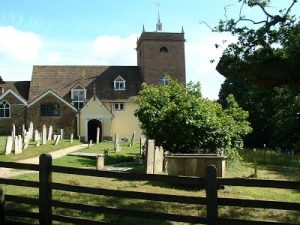
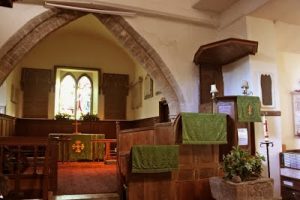
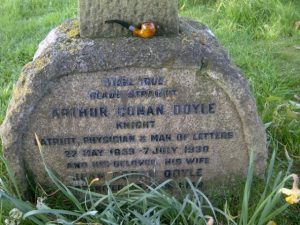
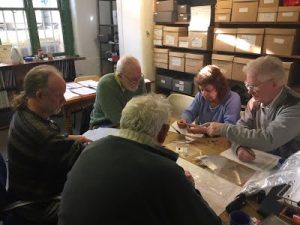
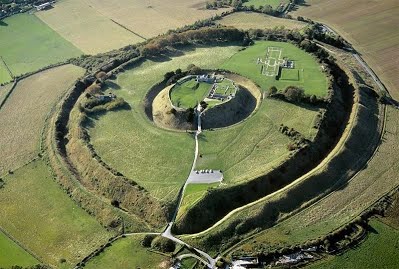
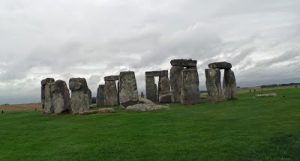
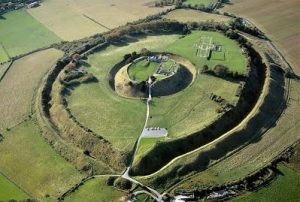
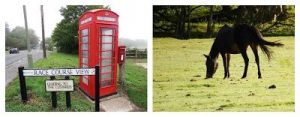
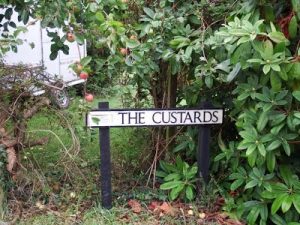
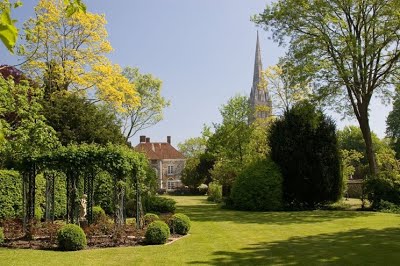
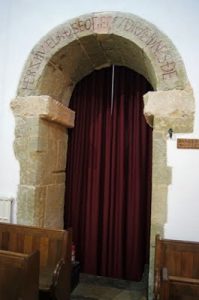
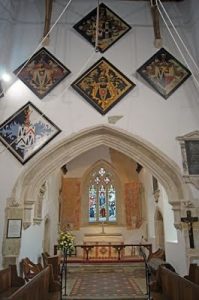
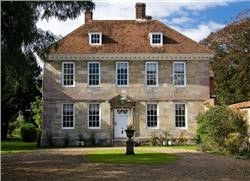

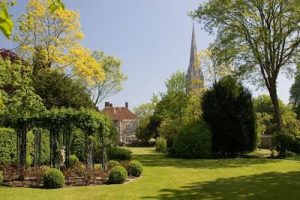
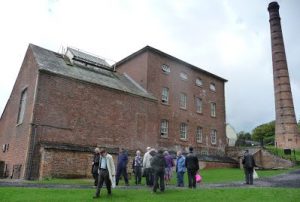
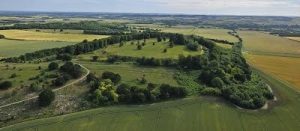
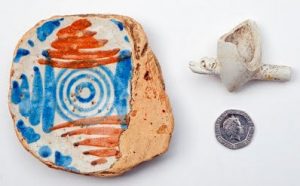
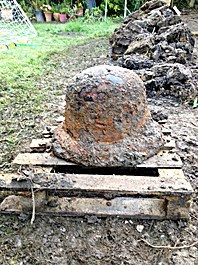
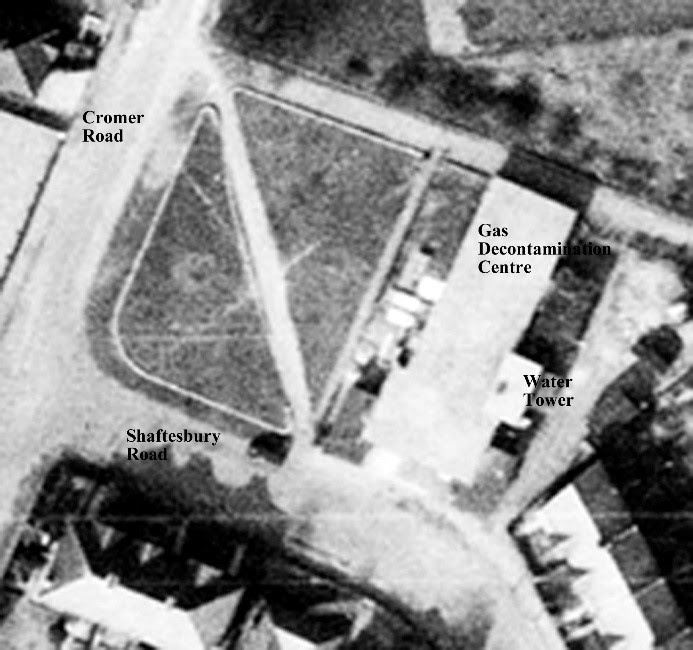
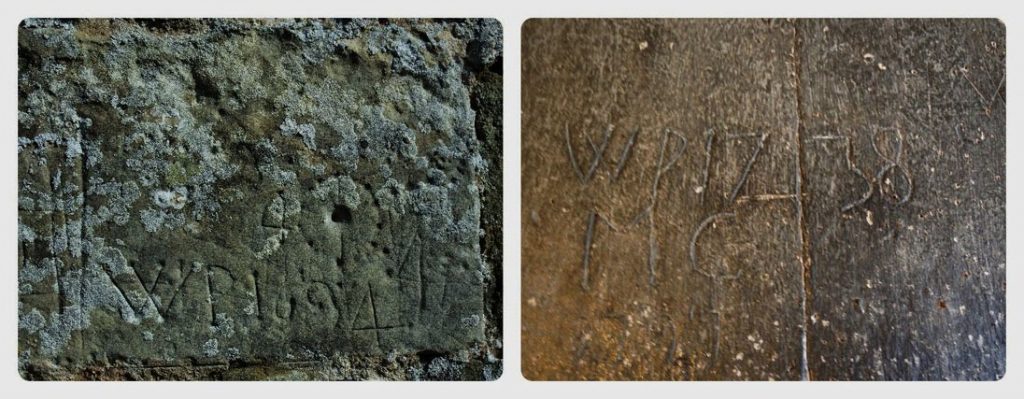
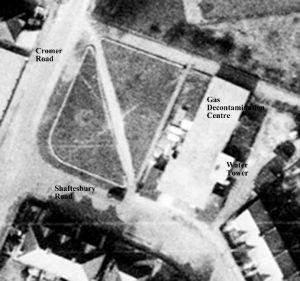
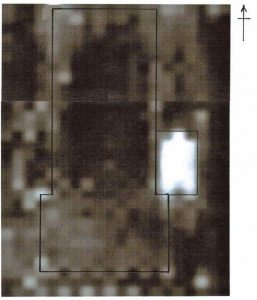
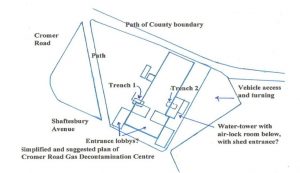
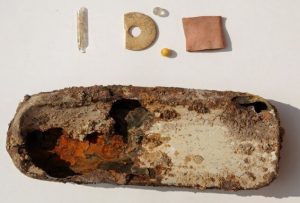
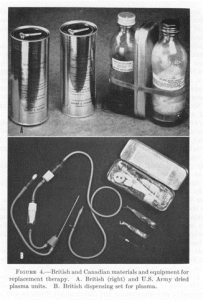
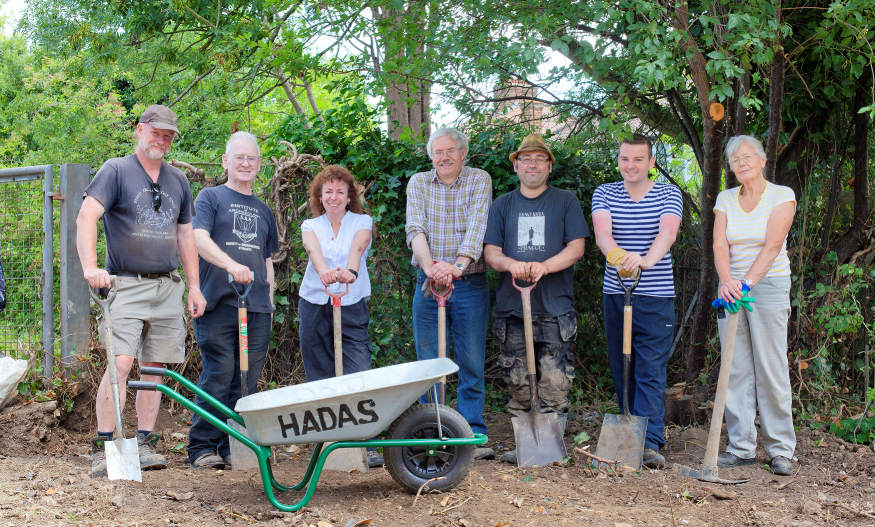
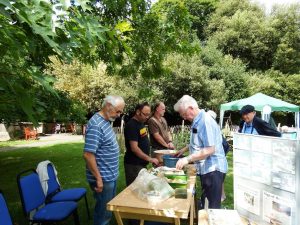
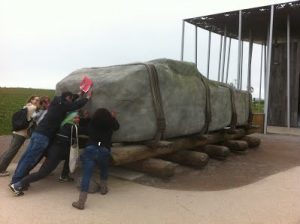
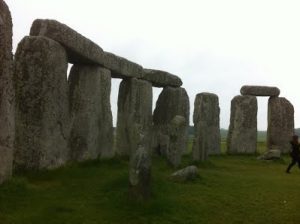
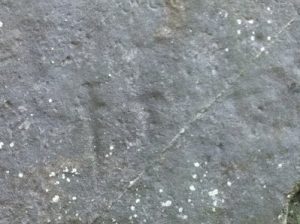
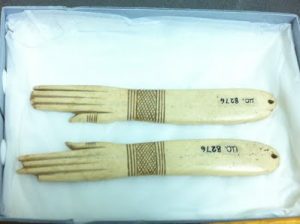
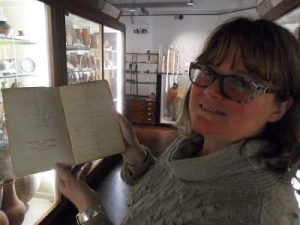
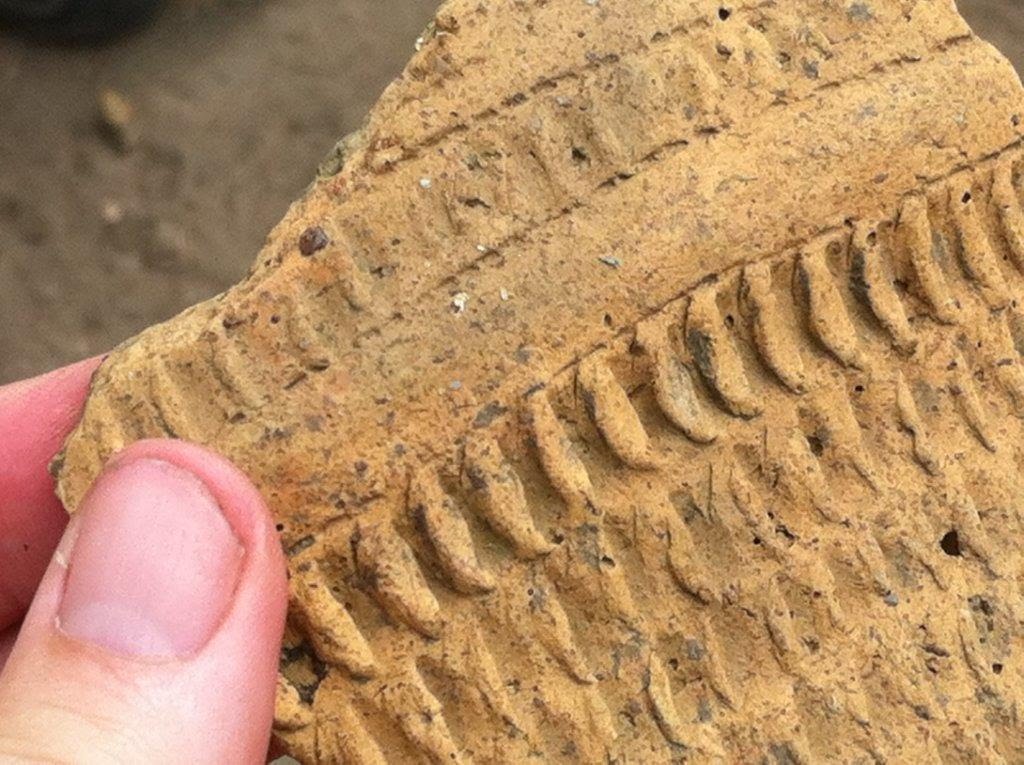
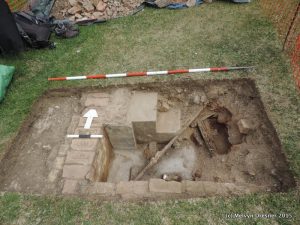
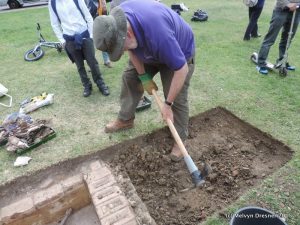
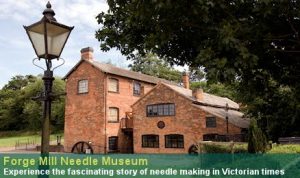
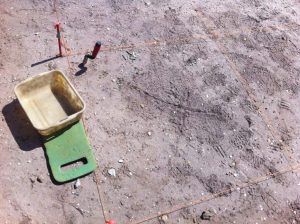
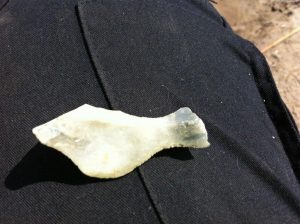
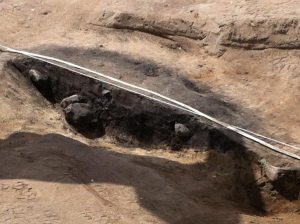
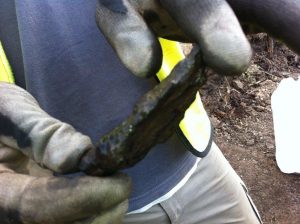
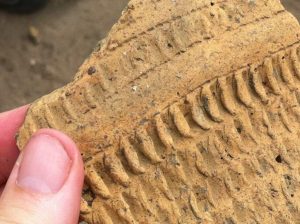 At Hanson’s gravel quarry at Shardlow on the River Trent in 1998, workman spotted what seemed to be a hollowed out tree trunk with stone inside. Doctor Chris Salisbury, an archaeologist, identified it as an ancient Logboat. Excavation took place in 1998-9 and this Logboat was the first to be discovered with what appeared to be its cargo. The cargo was identified as Bromsgrove sandstone, which is found further upstream.
At Hanson’s gravel quarry at Shardlow on the River Trent in 1998, workman spotted what seemed to be a hollowed out tree trunk with stone inside. Doctor Chris Salisbury, an archaeologist, identified it as an ancient Logboat. Excavation took place in 1998-9 and this Logboat was the first to be discovered with what appeared to be its cargo. The cargo was identified as Bromsgrove sandstone, which is found further upstream.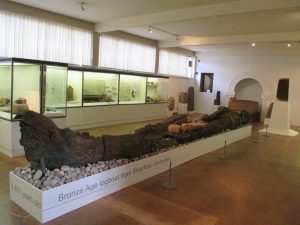
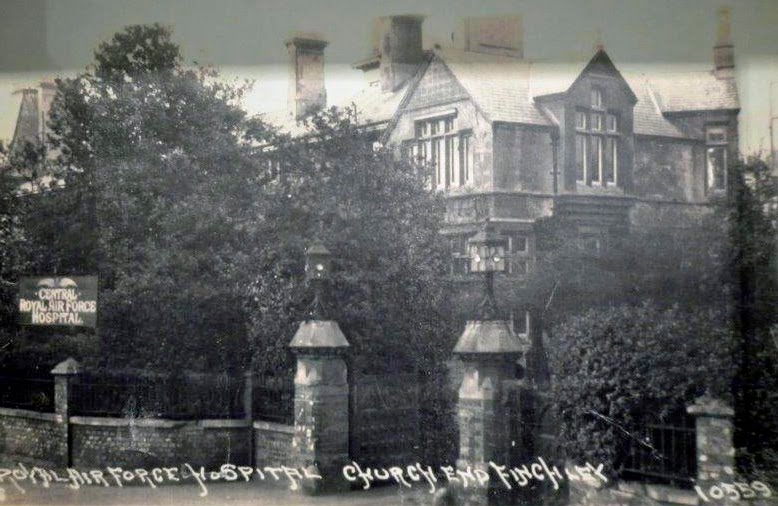
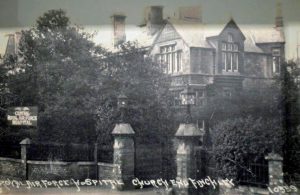
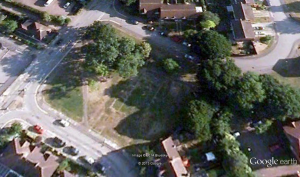
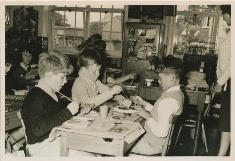 Further reports will appear in future newsletters.
Further reports will appear in future newsletters.